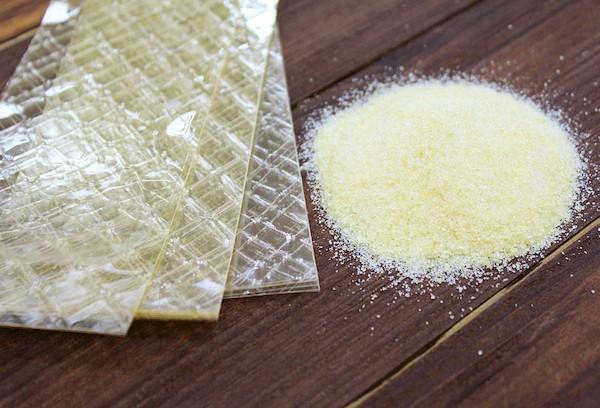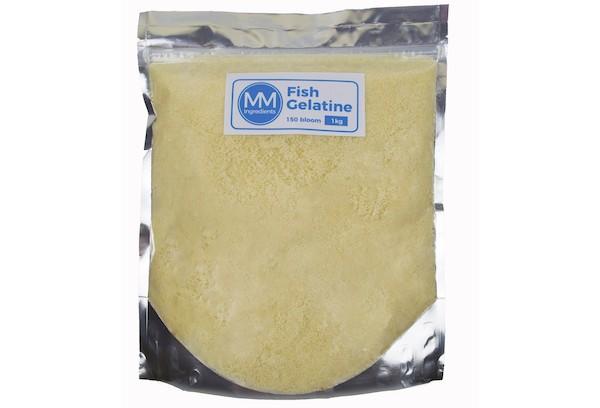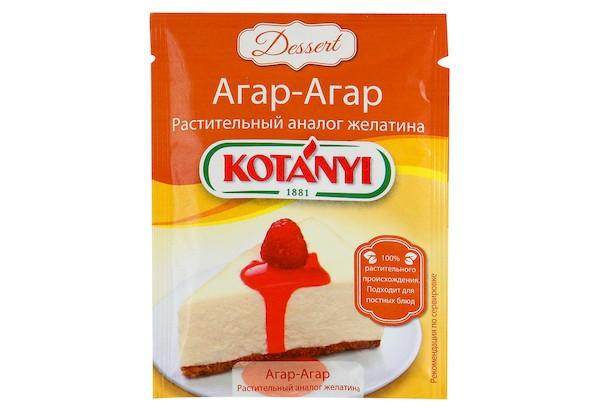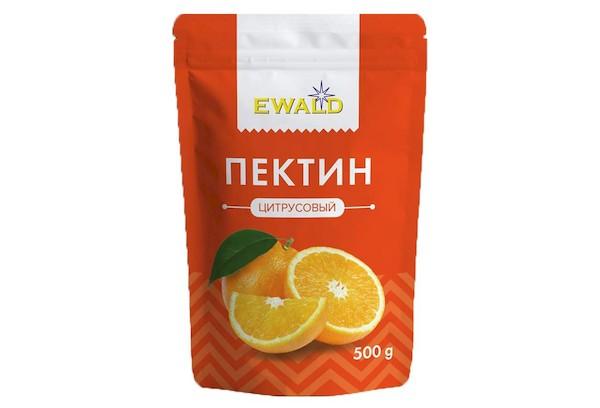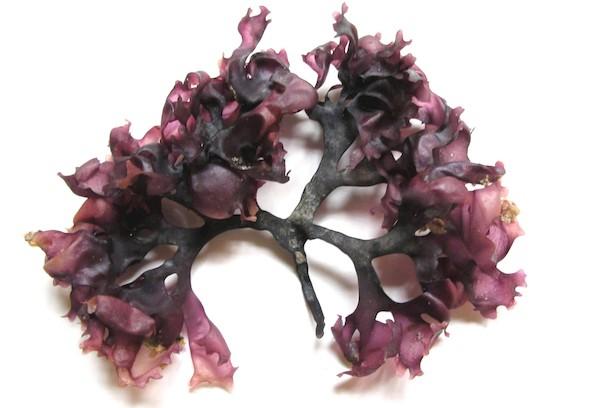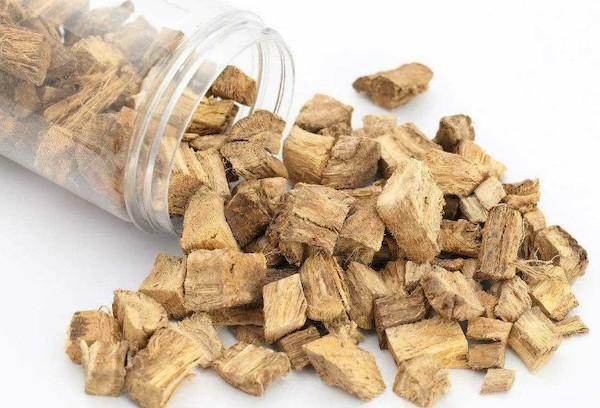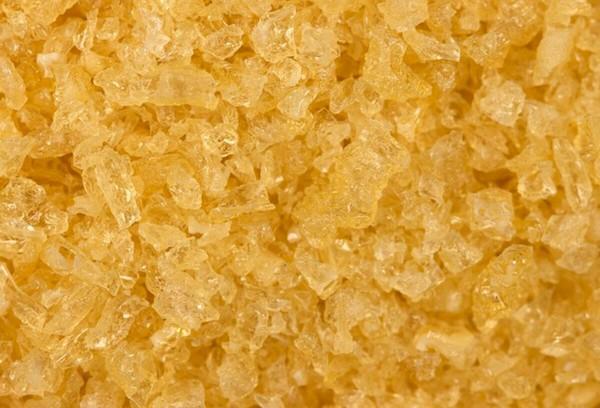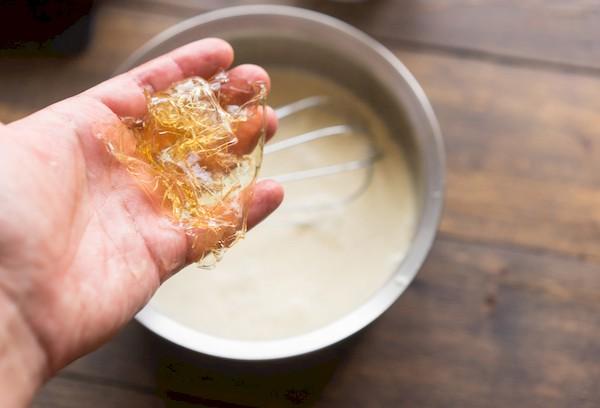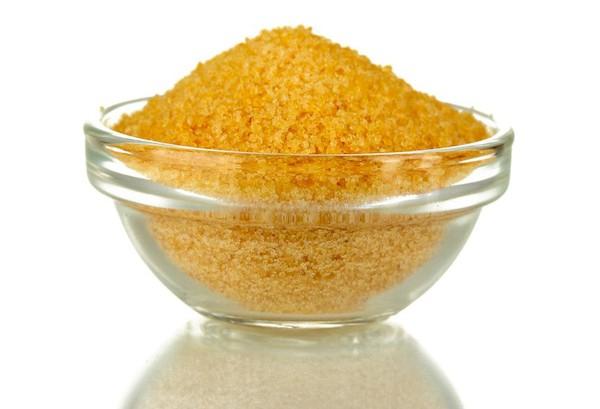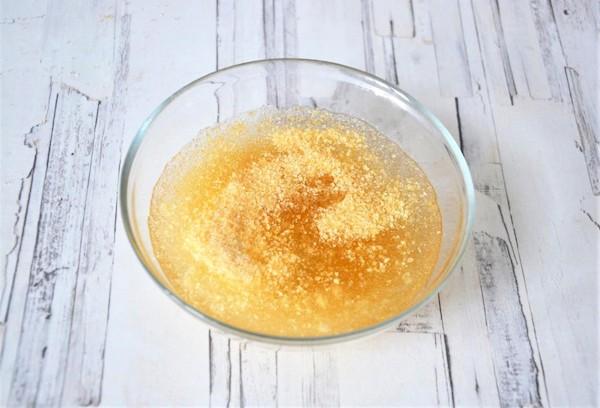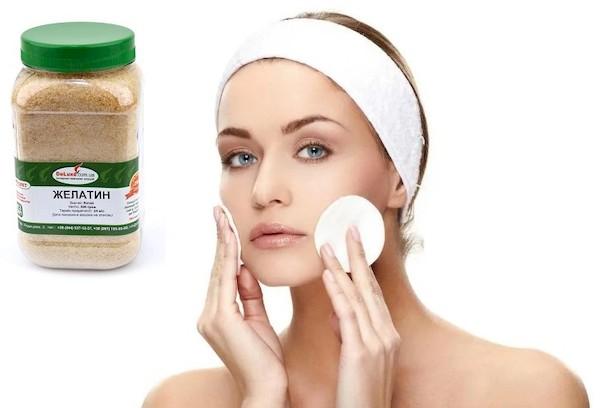What is food gelatin, where is it used and what can it be replaced with?
Content:
Edible gelatin (from the French gélatine and Latin gelātus, which means “frozen” or “solidified”) is a product obtained by processing the bone mass and connective tissues of animals. More often, parts of cattle carcasses are used to make it, less often - bird bones, skin and fish scales.
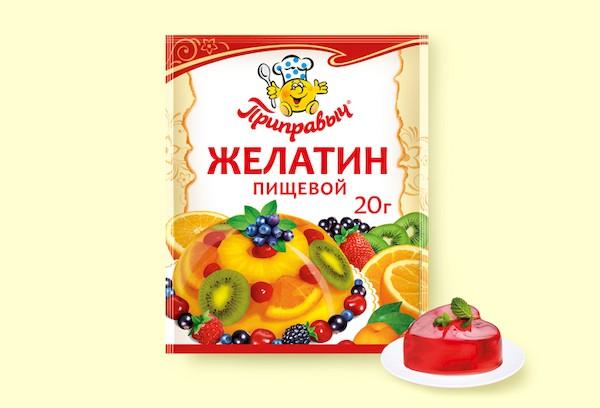
The method for extracting gelatin was developed by the French chemist Jean Darcet in the 18th century, and over the past centuries the technology has remained virtually unchanged. But the scope of application has expanded significantly - if initially gelatin was used only in cooking, as a thickener, now it is included in adhesives, paints and varnishes, medical and cosmetic products. Gelatin is also used in the production of photographic and film films, photographic paper, textiles, and is used as a nutrient medium for growing bacteria, etc.
Edible gelatin
Edible gelatin is sold in dried form, in the form of powder, granules or thin sheets. Color varies from cream to deep yellow. Before use, it is soaked in cold or warm water, often in boiling water.It also “dissolves” well in milk, salt and sugar solutions, turning into a viscous, paste-like mass that has no odor.
What is gelatin made from?
The main type of raw material for the production of gelatin is the bones of livestock, mainly cows and pigs. But not just any, the following parts of the animal skeleton are priority:
- skulls, including jaws;
- pelvic bones;
- shoulder blades;
- ribs separated from the vertebrae.
Manufacturers often add other parts of the skeleton, but in small quantities. The main raw material mass consists of the listed types of bones.
Gelatin is also made from the skin, subcutaneous tissue, cartilage and tendons of animals. It is also produced from bird skeletons, but since such bones contain less collagen, the output volume is small. In addition, such gelatin is significantly inferior in quality to pork or cow gelatin - its thickening properties are much weaker. It does not provide the required density, and when added to a liquid, it turns it into a mass like thick jelly.
Another variety is fish gelatin. It is prepared from the skin and scales of river and sea fish, and whaling waste is also used. The most valuable product is considered to be obtained from parts of the carcasses of marine inhabitants; in addition to collagen, it contains chondroitin and glucosamine - substances necessary for the human body to maintain healthy joints.
How to prepare gelatin
Regardless of what gelatin is made from, the production process includes the following steps:
- Preparation. At the initial stage, the raw materials are cleaned of foreign impurities.If it is bone mass, it is treated with dilute acid solutions to remove calcium, and hot water or special solvents are used to reduce the proportion of fat. And when skins or skins are taken to produce gelatin, they are washed, wool is removed, crushed and disinfected.
- Conversion of collagen into gelatin (hydrolysis). It is carried out by acid, alkaline or fermented methods. The first is more often used in the production of gelatin from pig skin; processing takes from 10 hours to 2 days. The second is in the manufacture of a thickener from parts of the skeleton and skin of cattle. This method requires more time, usually up to several weeks. The fermented method is used on any type of raw material, its advantage is that it is faster than the previous two, and through such processing it is possible to make a product with the best thickening properties.
- Extraction of gelatin from the hydrolysis mixture (extraction). This is a multi-stage, complex process that is carried out using water or acid solutions. The liquids are heated to a certain temperature, gradually increasing it in subsequent stages of extraction. This allows for minimal decomposition of thickening elements and a larger volume of product at the outlet.
- Recovery. This step includes extraction, filtration, clarification, evaporation, sterilization, drying, grinding and sieving of the product. Despite the impressive list of procedures, the last stage involves the least amount of time.
- Packing and packing. Gelatin is sold in small paper, polypropylene or other packaging materials.As a rule, the mass of the thickener in one package is 8-15 g.
As is clear from the description, the process of making gelatin is quite long. In general, it takes about 60 days.
Plant analogues of gelatin
You can also obtain a gelling mass from some products of plant origin. How to replace gelatin:
- Agar-agar. This thickener is obtained from red and brown seaweeds that grow in the Pacific Ocean, Black and White Seas. It is produced by alkaline treatment and subsequent extraction. The resulting product is not inferior in its thickening properties to gelatin.
- Pectin. The substance is extracted from apples, citrus peel, sugar beets, and sunflowers. In terms of gelling properties, it is somewhat inferior to agar-agar, but if you add a little citric acid to pectin, this will enhance the effect of its use.
- Carrageen (Irish moss). This is seaweed that is soaked and then cooked for several hours. The product provides approximately the same thickening effect as pectin.
- Pueraria lobata (kudzu). This is a crop native to Japan. The underground part of the plant is used to prepare the thickener. The mass has average gelling properties.
The technology for preparing a vegetable thickener, regardless of what raw materials are used, is approximately the same. The starting product is sorted, crushed and treated with alkali. Then the resulting mass is extracted and filtered, freed from excess moisture, dried and ground again, and then packaged. Some types of plant materials, such as Irish moss, require additional preparation (soaking).
Just like thickeners of animal origin, vegetable thickeners have found application in many areas. They are used in the food industry as stabilizers and flavor enhancers, in the pharmacological industry they are added to the shells of capsules, syrups, lozenges and dragees, in the cosmetic industry they are used to give the desired consistency to foundation creams, lipsticks, masks, gels, lotions, etc.
Synthetic analogues of gelatin
These products are produced through chemical synthesis. The most common analogues of gelatin are:
- carboxymethylcellulose;
- locust bean gum;
- xanthan gum;
- guar gum;
- gum arabic.
Of the options listed, xanthan gum is considered the best. The substance is odorless and colorless, can dissolve in any type of liquid and provides an excellent thickening effect. It is widely used in food production as a stabilizer (xanthan gum is labeled E415 on product packaging).
Composition and nutritional value
The basis of natural gelatin of animal origin is collagen, a connective tissue protein that provides strength and elasticity to anatomical structures. It is thanks to it that the finished gelatin acquires the ability to thicken liquids and maintain its shape.
100 g of product contains more than 87 g of collagen, and 10 g is water. The rest of the mass consists of the following types of substances:
- ash;
- animal fats;
- carbohydrates;
- starch;
- calcium;
- phosphorus;
- magnesium;
- sodium;
- potassium;
- iron;
- amino acids;
- vitamins.
The nutritional and energy value of gelatin is 355 kcal/100 g, BZHU - 87.2/0.4/0.7 g.
Use of edible gelatin
Having received an answer to the question of what gelatin is and what are its main properties, we can conclude that the scope of its application is very wide. Thickeners are used in a wide variety of industries and the national economy, but they are most widespread in several areas - food production (including home cooking), medicine and pharmaceuticals, as well as in cosmetology.
In cooking
Gelatin is found in many foods and dishes, namely:
- jellies and aspics;
- semi-finished meat products and canned food;
- jelly;
- syrups;
- glazes;
- caramels;
- marmalades;
- yoghurts;
- curd masses;
- processed cheeses;
- moussah;
- creams;
- sweets;
- some types of ice cream and drinks.
The function of gelatin is not only to give dishes the necessary consistency. It is also added for other purposes:
- enhance taste;
- stabilize the shape of the product;
- lighten the mass or give the color of the product greater saturation and brightness.
And in the production of sausages, gelatin is used to create a protective shell for the product.
In medicine and pharmacology
Gelatin is used to make a shell for encapsulated medications - it dissolves quickly, does not cause allergies and is absolutely safe for the gastrointestinal tract. And also, based on the food thickener, medicinal solutions for various purposes are prepared, for example:
- to create artificial blood plasma;
- to normalize the coagulation process and stop bleeding;
- as part of the treatment of conditions arising from hemorrhagic diathesis and hemophilia;
- in the complex treatment of joint diseases.
The therapeutic properties of gelatin are due, for the most part, to the content of calcium ions in an accessible biological form.
In cosmetology
Gelatin is widely used in this industry due to collagen, which increases skin elasticity. The product is added to various skin care products:
- masks;
- face and body creams;
- ointments for acne and acne;
- shampoos;
- shower gels, etc.
Gelatin is used not only on an industrial scale, but also in the manufacture of home care products for the face and hair. Thus, cleansing film masks made from food thickener and crushed activated carbon are very popular. And some claim that hair lotion made from a weak gelatin solution is an excellent alternative to lamination and protects ends from split ends.
Other uses of gelatin
Gelatin can rightfully be considered a multifunctional product due to its wide range of applications. Below are just a few of the options for using it:
- Professional lighting lamps are made from gelatin to change the color of the beam. Such lighting devices are often used in theaters and concert halls.
- The thickener is added to soft drinks containing β-carotene. Gelatin makes it water soluble, causing the liquid to turn yellow.
- Gelatin helps hold the silver halide crystals in photographic films. Suitable substitutes with similar stabilizing properties at low cost have not been found to this day.
- Some types of gelatin are used in ballistics, to test and measure the characteristics of firearms bullets.
- Gelatin is present in sandpaper and match sulfur as a binder.
The product has also found application in biotechnology - it is used in the synthesis of hydrogels for tissue engineering.
